Gardenia, an evergreen plant, is known for its dark green foliage and strongly aromatic flowers. Keep one of its flowers in your pocket on special occasions and people will naturally gravitate towards you.
In this article, we’ll cover every detail on how to grow the most handsome foliage of Gardenia jasminoides, so let’s get started.
More...
What is a Gardenia jasminoides?
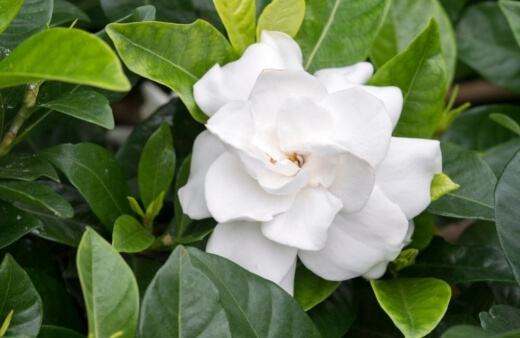
The scientific name of this plant is Gardenia jasminoides. Also known as Dành dành, Cape Jasmine, and Cape Jessamine Derive, are a flowering plant, belonging to the coffee family, Rubiaceae.
According to the floral meanings, they symbolise secret love. They are found in tropical and subtropical regions of Africa, Asia, Madagascar, the Pacific Islands, and Australia.
Their height can range from 8 to 20 feet while the width can go up to 10 feet. Cape Jasmine’s growth rate varies and is divided into three types: Slow growers, moderate growers, and fast growers.
Slow growers grow at a rate of 12 inches or less per year, moderate growers grow 1 to 2 feet per year, while fast growers grow more than 2 feet each year. However, if you’re growing them from seeds then don’t expect the above kind of growth as it will take a considerable amount of time.
You might get the impression that they are only known for their beautiful flowers, but this is not true. They have a myriad of medicinal uses.
People eat raw gardenia for anxiety, depression, high blood pressure, diabetes, constipation, liver disorders, and so on. Its fruit is used in food as a yellow food colourant.
Popular Types of Gardenia
There are over 200 species of this plant which are differentiated based on height, colour, flower, size and so on. Here are two of our favourites:
- Gardenia jasminoides ‘August Beauty’. This type is known to have the longest blooming season which is about 3 months. They got their name because of their quality of blooming deep in the summer.
- Gardenia jasminoides ‘Florida’. It is a gardener's favourite because it is the easiest to grow and doesn't have difficulty meeting care requirements. They are ideal for pots and grow up to 1m high.
How to Grow Gardenia jasminoides
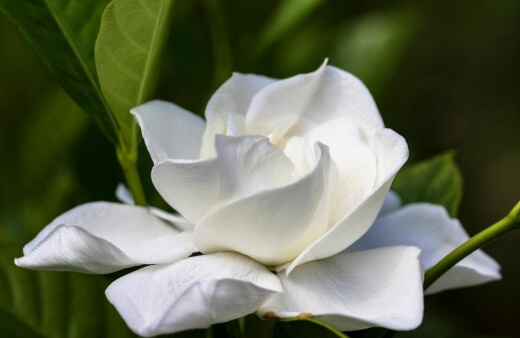
Growing cape jasmine from seeds takes at least twice or thrice the amount of time compared to growing it from cuttings. It takes almost a year to grow it from cuttings.
If you want to know how to grow it from seeds, follow these upcoming steps.
- Collect or buy gardenia seeds.
- Sow seeds in a tray.
- Temperature and humidity requirements should be taken care of along with watering.
- Keep the soil moist but not soggy.
- Allow the plant to grow their third leaf. Once that’s done, transplant them into small pots
- Keep following the care protocols and once the plant outgrows their pot, transplant it for the second time to a bag that can be used to transfer them to your backyard.
Propagating Cape Jasmine
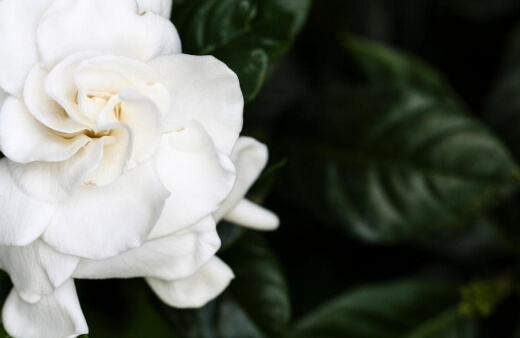
If you want to grow your Cape jasmine in numbers then propagating it is a good idea. Make sure the cutting is taken from the tip of the branch and is 5 cm long or more.
The second step involves eliminating all the leaves except for the top two sets. Next step is to prepare the soil and follow the care protocols. Another thing to ensure is to keep it in high humidity until rooting (4 to 8 weeks).
Planting Gardenia
Planting gardenia can be a wise decision as no plant can match its medicinal uses. Now that you know its significance, it’s time to discuss its plantation.
If you’re planning to plant more than one gardenia then make sure to leave at least 3 to 6 ft of space between them. The hole you dig should be at least twice as wide as the plant’s root ball.
The pot should be at least 4 inches wider than the plant's root ball so the plant has plenty of soil to support it. While they require a bit of high caring efforts, they are worth it.
Their evergreen nature allows them to grow throughout the year. However, the best time to grow Cape Jasmine is fall or spring. This is also the time when its flowers bloom. The flower blooms usually last a couple of weeks before wilting.
Unlike other indoor plants, they actually enjoy direct sunlight and average temperatures of 20°C
or higher. But that doesn’t mean that they won’t enjoy the shade.
They require 4 hours of direct sunlight every day along with afternoon shade. If you plan to grow them outdoors, make sure to keep them in partial shade or their leaves will get burned with continuous high temperatures.
Caring for Gardenia
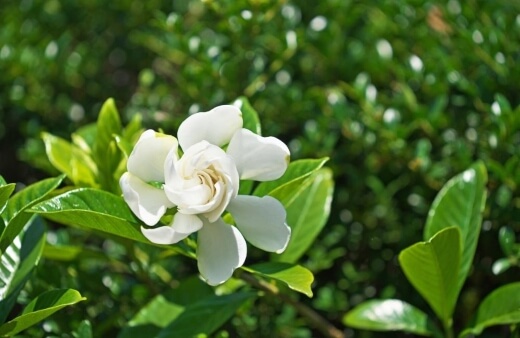
If you don’t want them to become yellow and die then read this section to know how to care for them. If you plan to grow them, keep the soil moist throughout the year and never let the soil dry out.
This may trigger an extra sense of care, but you don’t want to overwater them either as this will also work against its favour and the flower buds may not open or might drop off. A well-draining soil is a must for them.
Coming onto the sunlight requirements, they don’t like to be kept behind the bars in shadow. Four hours of direct sunlight is a must for them to bloom. Ignoring this requirement can also lead them to turn yellow.
Good air circulation, afternoon shade, a watering routine, and proper fertilisation are also crucial for their growth. Here are their watering and fertiliser requirements.
Fertiliser Requirements
It requires acidic, slow-release fertiliser like an azalea or camelia. If you’re going for organic gardening then you can use blood meal, fish emulsion, or bone meal instead as they would produce the same effect for you.
Watering Gardenia
They require weekly watering of 1-inch rainwater. However, in winters you should be careful with watering. Soggy soil can ruin everything for you. It’s a good practice to check the moisture by sticking your finger a few inches in the soil. If it feels wet then you’re in the danger zone, correct your practises for the next time.
Pruning Gardenia
Pruning is a great way to manage the plant size especially in the case of Cape Jasmine. To limit the plant to a manageable size, pruning every other year seems to be the most reasonable option. (Get the best pruning shears available online).
Common Gardenia Diseases
Gardenia falls prey to diseases such as root rot, powdery mildew, and stem canker.
Root Rot
This is usually caused by overwatering or through poor drainage soil. This causes fungal pathogens to develop which in turn destroy root tissues and lead the plant to turn brown or black. If you see your plant leaves becoming yellow then this is also a sign that fungal pathogens have taken control.
All this can happen gradually as well as in speed like the viral flu, it depends. To fix this situation, dig immediately and prune away the damaged plants.
Once that is done, replant them in a better spot with good drainage. Along with that, make sure to fix your watering routine and only water when the first two inches of the soil is dry.
Powdery Mildew
This disease is a result of poor air circulation, sometimes also caused due to thicker bushes and tree canopies. It looks like a white powdery coating. To treat it, use neem oil. Moving the plant away from other plants can also improve the air circulation.
Stem Canker
Dark, oval lesions are formed when fungus phomopsis gardenia gains access through wounds. To counter them, remove the affected stems and cut back into healthy tissues. This might have been caused due to poor drainage, and watering and air circulation issues.
Pests to Look at For
Pests that most commonly feed on gardenias include whiteflies, aphids, caterpillars and Japanese wax scales. Caterpillars feed at night and hide in the day so you need to be wary of them.
Aphids on the other hand, sucks the fluid from the plant and love the new juicy plant growth so make it a practice to look on the underside of the leaves from time to time. Bud or flower failure is also one of the causes of pest takeover.
There are various easy solutions to tackle these pests which includes using neem oil, horticultural oil, insecticidal soap, burying banana or orange peels 1 to 2 inches deep in the soil, and employing predator insects such as lady bugs.
The insecticidal soap or horticultural oil should be sprayed onto aphids 3 times a day for at least a week
Common Gardenia Problems/Tips
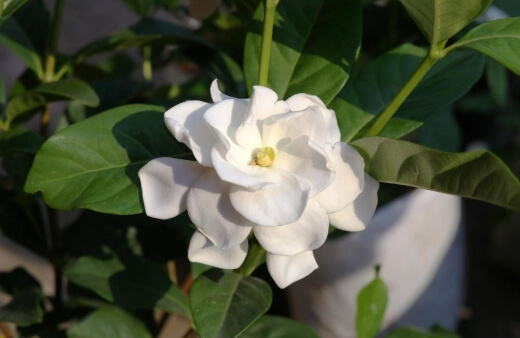
Gardenia requires extra care and if you’re not following the basic care protocols then they won’t bloom. To tackle that, we have gathered some tips and advice for common plant issues. Let’s discuss what they are.
- If you’re doing everything right but still your plant has yellow leaves then it might be because of iron deficiency. To avoid such a situation, use acidic soil with a pH of 5 to 6.5.
This pH range is bound to make iron available to the plant. If the pH of your soil differs from the above-recommended numbers then you can easily adjust it using acidic fertiliser. - They don’t tolerate much cold and their flower buds may drop off in such chilly temperatures. While they can handle light freezes, they won’t survive sustained cold temperatures, especially if their root zone gets deeply frozen or they succumb to winter dryness.
Blackened leaves are a clear indicator of winter damage. If the winter damage is not much then these plants will rejuvenate themselves in the spring. - Your plant can also suffer if you're surpassing its requirements to the point of it doing more harm than good. Overwatering, over fertilising, and soggy soil are all responsible for root rot and leaf yellowing.
Don’t try to be over smart or lazy as this can instead hurt the plant.
Are you looking for more jasmine plants for your garden? Start growing fantastic trailing vines with our complete Star Jasmine growing guide.
Gardenia jasminoides Frequently Asked Questions
How big does Gardenia jasminoides grow?
Gardenia jasminoides grows up to 6ft tall, but can be pruned to pretty much any size, and makes exceptional bonsai very quickly from seed. For fragrant hedges and shrubs, leave Gardenia jasminoides to grow before pruning carefully to a bud or node to achieve the shape you want.
Refer to our in-depth guide on how to grow a gardenia hedge for more details.
Is Gardenia jasminoides native to Australia?
Gardenia jasminoides is native to southern China and Japan, but grows happily outdoors in Australia. For a native alternative to Cape Jasmine, try growing Atractocarpus fitzalanii (Naiver Gardenia) which is native to Australian rainforests and does surprisingly well in cooler parts of the country.
Is Gardenia jasminoides hardy?
Gardenia jasminoides is hardy throughout Australia but does need some protection from extreme or prolonged frost and cold wet temperatures. Containerised plants may move indoors for winter, or into greenhouses to offer protection from the rain.
What is the difference between gardenia and jasmine?
Jasmine is typically a climbing plant, while gardenia has large and waxier leaves and grows as a shrub or bush. Their fragrance is similar, but the pungent punch of gardenia is more impactful in Australian gardens.
For a more subtle vanilla hit that lasts through the entire evening, climbing jasmine is a more effective evening-scented plant.
Are gardenias better in pots or the ground?
Gardenia jasminoides prefers to be planted into well-drained, nutrient rich soil directly in the ground, but grow perfectly well in pots and even hanging baskets.
As relatively slow-growing garden shrubs, they can have many uses before they eventually find their way into the border, so try them in hanging baskets or pots before they get too big and need planting out permanently.
Are gardenias high maintenance?
Gardenias are high maintenance plants. They need pruning at the right time of year to keep them blooming regularly, and regular watering on well-drained soil to keep them moist but never waterlogged.
Any plant with such needy growing requirements can put gardeners off, but the unbeatable fragrance and traditional beauty of gardenias always keeps gardeners coming back for more.
What’s the best place to plant Gardenia jasminoides?
Gardenia jasminoides need full sun in the morning and evening, but some dappled shade from harsh summer afternoon light can be useful to take the strain off their roots, and reduce the need for watering.
Despite their need for well-drained soil, they do not tolerate drought, so if you have sandy soil, it’s probably best to plant them somewhere accessible for regular watering.
What does Gardenia jasminoides smell like?
Gardenia jasminoides smell like lime and vanilla, but on warm summer days it can take on an almond scent too. If you’ve ever smelled these plants in the street, it’s an unforgettable aroma, and pretty much impossible to justify in words.
Is liquid seaweed good for Gardenia jasminoides?
Liquid seaweed is ideal for gardenias. Their waxy foliage needs plenty of nutrition and the balanced nutrients and minerals of liquid seaweed are a perfect way to gently boost their soil to get the most out of them during their flowering season.
Can you grow gardenias indoors?
Many gardeners choose to make a feature of Gardenia jasminoides indoors as a houseplant. While these plants prefer to be outdoors in nature, they can thrive inside on a kitchen table with good light and regular feeding.
Regular pruning will be required to keep them blooming and looking their best.
Is gardenia toxic to pets?
Gardenia is toxic to pets, including dogs, cats and even horses. The fragrance in itself is an irritant and can cause lethargy, but it is only when the plant is ingested that it causes vomiting and gastrointestinal problems.
Are Epsom salts good for gardenias?
Gardenias that are showing signs of yellowing foliage, or with paler than usual leaves may have a magnesium deficiency and applying Epsom salts can help to fix it. However, you should not apply Epsom salts to your garden without reason, because they can often over enrich the soil and upset its natural balance.
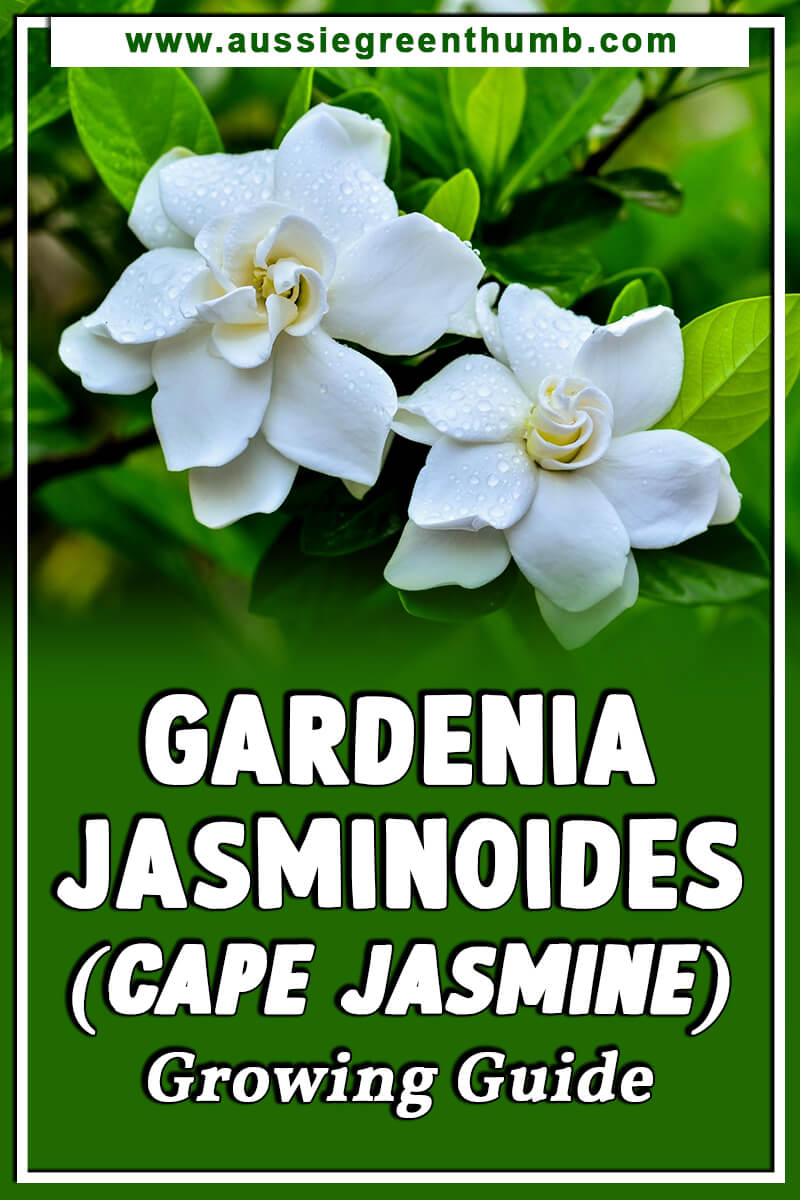
Wrapping Up Our Gardenia jasminoides Growing Guide
Gardenia is an evergreen plant with long-lasting, fragrant white flowers and fruits. Though it requires more care than other indoor plants, they are worth it. Medicinal uses are where it excels. It can be used to treat a myriad of diseases and is completely edible.
Now that you know the specialty and uses of Gardenia jasminoides, it’s time to buy and decorate your home with it.
Published on January 15, 2023 by Maisie Blevins
Last Updated on February 22, 2024




